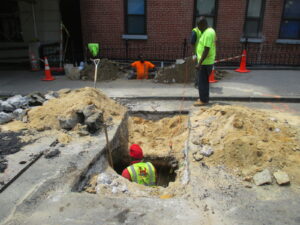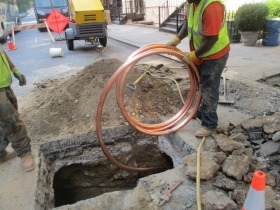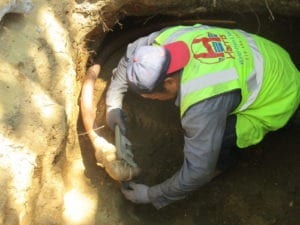Recently on the UES of Manhattan a family purchased a newly renovated townhouse. After the final inspection they were surprised to see that the only item in the house that had yet to be renovated was the domestic water supply.
It was easy to see that the existing water main was made of lead and was in terrible condition. The new homeowners decided not to waste any time and scheduled to have the lead water main replaced with a copper water main. The homeowners also took this as an opportunity to upgrade the size of their water line. They decided to replace the existing 3/4” lead pipe with a new 1 ¼” copper pipe, this would allow for better water pressure into the house. It is very common that the old lead pipe is corroded on the inside which would lead to a restriction of water flow.
 |

|
The new copper water main installation started one week later, after all permits had been obtained. Lucky for the homeowners, their installation was a “short water”, which meant that the city main was on their side of the street. The alternative is a “long water”, which would require the new pipe to be installed from the opposite side of the street. A long water results in additional cost for permits, labor, restoration and material.
|
Roadway opening
|

Water main tunnels |
Once the roadway was opened, the new pipe was installed through tunnels from the roadway, to inside the house. The licensed water main and sewer contractor made one additional hole on the property where the new pipe was pulled through a tunnel, and at this point pulled to inside the house.
|
Installing new copper pipe. |
Connect to city water main |
The entire installation was completed within ten hours, leaving the new homeowners at ease. After researching the web, they were made aware that the new copper pipe should last a minimum of sixty years!
Most common reasons for replacing a water line
The most common reason for replacing a water line is when the pipe has failed and has sprung a leak, this becomes an emergency situation and becomes very costly to repair on an emergency basis. The second most common factor is when a homeowner has a lead water main and wants to take a precautionary measure, and avoid the disaster of a broken water line.























